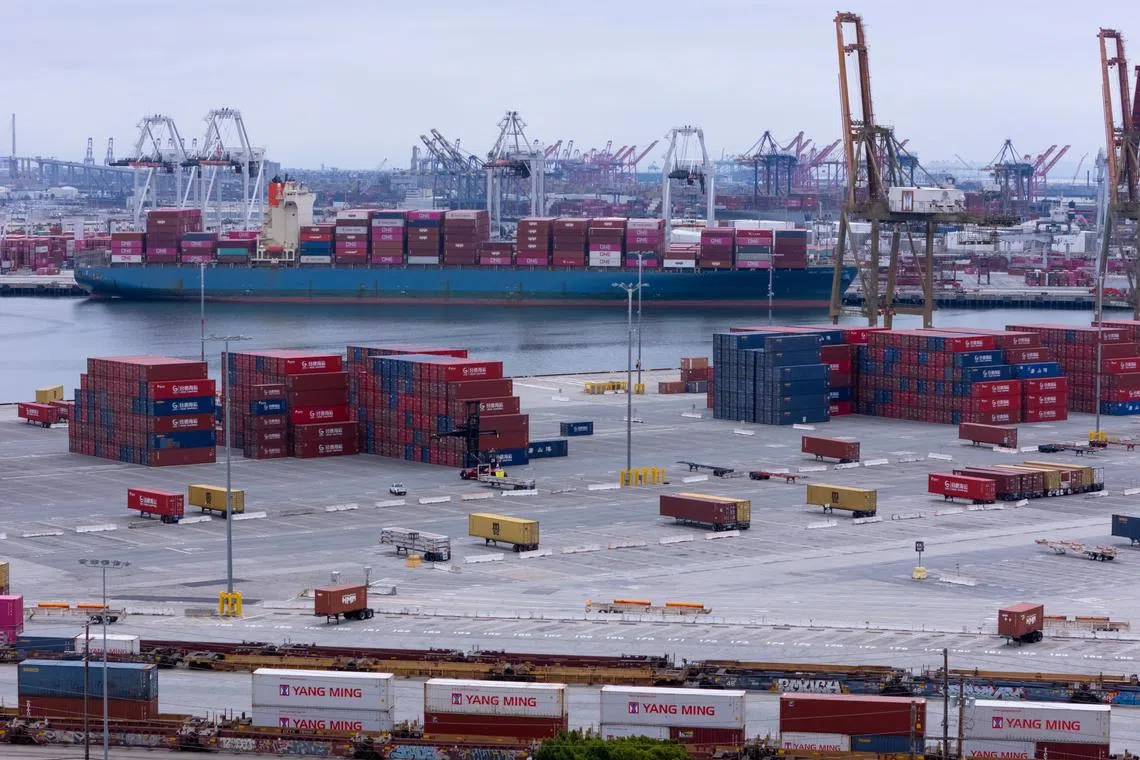China tariff relief spurs shipping rush, U-turn on price hikes
Sign up now: Get ST's newsletters delivered to your inbox

The temporary relief means that US companies will try to quickly ship out products that were being held in China's factory warehouses.
PHOTO: REUTERS
Follow topic:
NEW YORK - It may only be a 90-day reprieve
Therabody, a Los Angeles-based maker of wellness products such as Theragun massagers, restarted manufacturing and is ramping up production again in China, chief executive Monty Sharma said.
He added that “in my 40 years of work”, he has never been happier “about a 30 per cent increase in our costs”.
Getting up and running again will not be straightforward. Sellers of imports from China are facing risks such as a sudden surge of shipping demand that is expected to raise costs and create delays. On top of this, the relatively short 90-day window in which tariffs are being lowered does not give companies a lot of wiggle room when it comes to trans-oceanic supply chains.
Bogg Bag, a company known for its perforated tote bags, has reversed an earlier decision to raise prices and will instead keep them the same – at least for now. The company has also resumed production that was halted earlier this year. However, Bogg is planning to cut its fall and holiday product line-up by 45 items – or almost half of its collection – so that it does not have to rush production to make up for lost time.
Additionally, Bogg wants to move quickly to get products out. “Let’s get them finished, let’s get them loaded and on the water,” said Bogg’s CEO and founder Kim Vaccarella, because ports will begin to get crowded.
The temporary tariff relief means that US companies will try to quickly ship out products that were being held in factory warehouses in China, according to Mr David Chitayat, CEO of Genimex, which does contract manufacturing for global brands.
Many businesses will probably try to stock up on their products in the US to have a cushion of inventory in case trade talks break down or levies spike back up after the 90-day period. Some of those goods will still need to be produced, since some manufacturing was paused during the surge in tariffs.
Mr Chitayat predicted companies will be able to absorb the tariffs at their current level – but consumers will still face higher prices.
“The tariffs are still meaningful, but should be manageable for most brands,” he said, assuming companies hike prices. A 30 per cent increase in manufacturing costs translates to roughly a 5 per cent to 10 per cent increase in the price consumers pay for the product, he added.
Companies still face hurdles to ship their products to the US quickly during the 90-day window. In the short term, shipping is “going to be a mess with everyone scrambling to get space”, Mr Chitayat said. He expects container prices to go up but notes they are starting from a low point.
Tarptent, a California-based seller of outdoor gear, which had previously asked its Hong Kong-headquartered supplier to pause purchase orders from its factory in China, is now exploring whether its orders can be resumed.
The company is also gauging whether there is enough time to order and ship the US-made fabric it uses for its tents to the manufacturer in time for a production run to happen within the 90-day reprieve window in which the countries are engaged in talks.
“My guess is that it is pretty unlikely,” Mr Henry Shires, Tarptent’s president, said in an e-mail on May 12. “At this point, I would say that the 90-day widow is very narrow – and the window givers are too unreliable – to risk a big investment” in fabric, he said.
He said he was waiting for the sun to rise in Hong Kong to see if the manufacturer could use fabric that is already on site at the factory.
The lower-tariff window will help Net Health Shops in the short term, CEO Chuck Gregorich said. The home-goods company is looking into shipping dozens of containers from China that it paused in March. He expects this to boost its overall inventory and alleviate supply shortages.
Whether he decides to ship those containers will also depend on ocean freight rates, he added. He anticipates that rates could rise due to pent-up demand as other businesses look to get more items delivered in the coming weeks and months.
Longer term, he expects items from China to remain more expensive, so he’s prioritising sourcing products from other countries like Vietnam and India.
“My mind is already in those other countries,” he said. BLOOMBERG

